I truly don't understand people who claim a high Qms would be beneficial for midrange frequency reproduction. Get your physics right, I'd say.
You are correct that Qms is a parameter that is used in the mathematical description of the the driver resonance. However, the mechanical losses also exist at all other frequencies, and that's why Qms is meaningful to assess the physics of a driver at other frequencies. See my earlier post for more background.
@markbakk, a few additional questions if you don't mind.
- How would you measure the "mechanical impedance across the working frequency area"?
- How would you interpret the data, against which (acoustical/electrical/mechanical/parametric) model/benchmark?
- Even if you could obtain the necessary measurement data, how would you make a well-informed purchase decision based on the data + interpretation?
The reason for these questions is that, to this day, the mechanical behavior of woofers remains the least understood part, due to the highly complex nature of the materials and subsystems.
As a result, reasonable estimates regarding anything related to the mechanical parts can only be made for the low-frequency band, up to about 300 Hz.
- How would you measure the "mechanical impedance across the working frequency area"?
- How would you interpret the data, against which (acoustical/electrical/mechanical/parametric) model/benchmark?
- Even if you could obtain the necessary measurement data, how would you make a well-informed purchase decision based on the data + interpretation?
The reason for these questions is that, to this day, the mechanical behavior of woofers remains the least understood part, due to the highly complex nature of the materials and subsystems.
As a result, reasonable estimates regarding anything related to the mechanical parts can only be made for the low-frequency band, up to about 300 Hz.
Last edited:
Imo, its the Total Q of the speaker plus crossover that matters, as that is what you actualy hear.
Dr. Peter Strassacker, Loudspeaker designer since 1977:
"Qms is a measurement for the mechanical Q factor of a driver. It's dependent on the loss of the mechanical suspension (diaphragm surround and spider).
This value should be as high as possible."
High Q = low loss.
... So midrange cone resonances are allowed to ring for a while. Might sound "lively".
Chris
I've tested drivers with a wide range of qms.
The drivers that sounded the most interesting are high sensitivity, well damped, and used below their major breakup peak if they have one.
I don't see much of a downside to a strong motor and a well damped cone.
Isn't that what we want for accurate reproduction?
The drivers that sounded the most interesting are high sensitivity, well damped, and used below their major breakup peak if they have one.
I don't see much of a downside to a strong motor and a well damped cone.
Isn't that what we want for accurate reproduction?
The simple truth (to me) is that (good) acoustic measurements reveal enough. I do agree with Matthias that the mechanical part of an electrodynamic driver is a bunch of nonlinearities altogether (although I think his ‘stick and slip’ idea isn’t quite right). That is also true for the electric part btw. Motor behavior is quite nonlinear. And the acoustic part isn’t that easy either, certainly with cones breaking up and surrounds playing their own part. One can try to model it all and driver designers do that actually. Focusing on one quality like ‘high Qms’ is like focusing on ‘motor linearity’ or ‘cone weight’. It really is the whole meal that makes the good cook.@markbakk, a few additional questions if you don't mind.
- How would you measure the "mechanical impedance across the working frequency area"?
- How would you interpret the data, against which (acoustical/electrical/mechanical/parametric) model/benchmark?
- Even if you could obtain the necessary measurement data, how would you make a well-informed purchase decision based on the data + interpretation?
The reason for these questions is that, to this day, the mechanical behavior of woofers remains the least understood part, due to the highly complex nature of the materials and subsystems.
As a result, reasonable estimates regarding anything related to the mechanical parts can only be made for the low-frequency band, up to about 300 Hz.
Last edited:
To complicate matters further, here's a beast of a low freq. driver with fairly high Qms.
Obviously this isn't a mid woofer and I know from first-hand experience that it takes a beefy amplifier to breath life into its moving parts.
Obviously this isn't a mid woofer and I know from first-hand experience that it takes a beefy amplifier to breath life into its moving parts.
Attachments
-
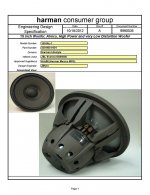 EDS JBL 1501AL-1_Page_01.jpg111.9 KB · Views: 316
EDS JBL 1501AL-1_Page_01.jpg111.9 KB · Views: 316 -
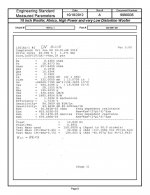 EDS JBL 1501AL-1_Page_08.jpg114.5 KB · Views: 317
EDS JBL 1501AL-1_Page_08.jpg114.5 KB · Views: 317 -
 EDS JBL 1501AL-1_Page_10.jpg180.7 KB · Views: 302
EDS JBL 1501AL-1_Page_10.jpg180.7 KB · Views: 302 -
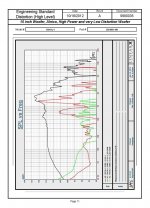 EDS JBL 1501AL-1_Page_11.jpg177.6 KB · Views: 296
EDS JBL 1501AL-1_Page_11.jpg177.6 KB · Views: 296 -
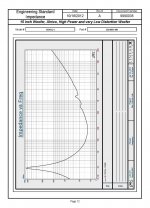 EDS JBL 1501AL-1_Page_12.jpg159.3 KB · Views: 272
EDS JBL 1501AL-1_Page_12.jpg159.3 KB · Views: 272 -
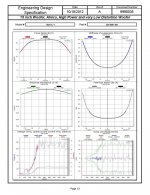 EDS JBL 1501AL-1_Page_13.jpg145.3 KB · Views: 152
EDS JBL 1501AL-1_Page_13.jpg145.3 KB · Views: 152 -
 EDS JBL 1501AL-1_Page_14.jpg332 KB · Views: 169
EDS JBL 1501AL-1_Page_14.jpg332 KB · Views: 169
I do agree with Matthias that the mechanical part of an electrodynamic driver is a bunch of nonlinearities altogether (although I think his ‘stick and slip’ idea isn’t quite right).
Could you be a bit more specific about what is not right?
To complicate matters further, here's a beast of a low freq. driver with fairly high Qms.
Obviously this isn't a mid woofer and I know from first-hand experience that it takes a beefy amplifier to breath life into its moving parts.
The force needed to move things is mainly related to the stiffness of the suspension parts and the mass of the moving parts. The mechanical damping / losses are not related to the force needed to move the cone.
Since all mechanical damping is fairly non linear, low Qms is bad when it comes to distortion. 10 or higher should be the goal.
Are you saying that Qms does not depend on Bl?
That's not what I meant. I was referring to Newtons second law, which tells you how much force is needed to move the cone. The driver in post #88 has a very heavy cone+coil and a stiff suspension, so it's no surprise you need a strong amplifier to drive it properly. However, this has nothing to do with mechanical damping/losses (Qms).
That said, I don't see why or how Qms woud depend on BL.
The Wikipedia article on Thielle Small parameters may be a good read.
Since all mechanical damping is fairly non linear, low Qms is bad when it comes to distortion. 10 or higher should be the goal.
Except that Qms references mechanical damping at its fundamental resonance.
Drivers primarily rely on mechanical damping below their fundamental resonance.
Because of this, low Qms drivers typically have better non-linear results near resonance. (..though often these very same drivers don't pay enough attention to distortion from inductance - and so: often have a rising harmonic distortion profile as freq.s go higher.)
Seas does this a LOT with their drivers, though they are starting to "ease-up" on this with their newer models.
Last edited:
Stick-slip occurs by definition on two surfaces touching each other in complete rest. A cone only is in resting position with no signal. Even the slightest of signals will make it move (if it wouldn’t, well, you know). I think the amp noise is enough.Could you be a bit more specific about what is not right?
Second: high Rms is often caused by eddy currents in the metal voice coil former. Now differences could also be found in spider and surround or even the cone (where high Rms actually is beneficial), but the main cause is the former. I think we can agree on eddy currents not having a clue about stick-slip.
Apart from that, stick-slip would not be measurable by assessing the Qms, as it per definition doesn’t occur when the cone moves. So whatever you are measuring, not that.
Last edited:
Cant remember where... but I red that the reason paper(soft) cones can play higher frequencies. Is because the cone is soft, so that the center dome can move quickly while the peripheral part of the cone is slightly damped by a harder suspension. I often see hard cones die out quickly as frequency rise, while paper seem to go on towards tweeter domains. And since the higher frequencies do emit mainly from the center of a cone, then the suspension could be a part of this trick - meaning - having a soft spider but a harder surround.I've tested drivers with a wide range of qms.
The drivers that sounded the most interesting are high sensitivity, well damped, and used below their major breakup peak if they have one.
I don't see much of a downside to a strong motor and a well damped cone.
Isn't that what we want for accurate reproduction?
Stick-slip occurs by definition on two surfaces touching each other in complete rest.
On a macroscopic level, yes. However, it also happens on microscopic scales inside deforming materials (like in the surround or the spider of a loudspeaker driver).
I think we can agree on eddy currents not having a clue about stick-slip.
Not quite. While it may not be called "stick-slip" in the electro-magnetic world, the phenomenon is still there. Depending on the strength of the eddy currents, the microscopic magnetic domains of the VC former get realigned. This reorganisation of the magnetic domains requires a certain threshold forcing. Below this forcing, things are in "stick" mode. Above this forcing, it's in "slip".
Apart from that, stick-slip would not be measurable by assessing the Qms, as it per definition doesn’t occur when the cone moves. So whatever you are measuring, not that.
Sure, and I never said that measuring Qms or Rms is the same as measuring "stick-slip". However, pretty much all processes covered in the Qms/Rms measurement exhibit some "stick-slip" behaviour. This is why "high Qms" usually implies "lots of stick-slip".
markbakk said:... (good) acoustic measurements reveal enough...
vacuphile (and others) said:...Since all mechanical damping is fairly non linear ...
Which kind of acoustic and maybe specific distortions caused by low-Qm nonlinearities would one expect?
And which (set of?) "good" acoustic measurement(s) would best and most selectively reveal these nonlinear-low-Qm specific distortions?
Cant remember where... but I red that the reason paper(soft) cones can play higher frequencies. Is because the cone is soft, so that the center dome can move quickly while the peripheral part of the cone is slightly damped by a harder suspension.
The holy grail of any FR driver is a controlled decoupling of the outer cone making for a smaller effective cone size as frequency increases improving lateral dispersion. It doesn’t have to be paper.
dave
Ah... thank you. I do see an advantage in having a rather broad banded driver, since its easier to work with, even though I only use it band-passed.The holy grail of any FR driver is a controlled decoupling of the outer cone making for a smaller effective cone size as frequency increases improving lateral dispersion. It doesn’t have to be paper.
dave
The RS 125 I use as a midrange right now, seems to have a very soft surround - even softer than the surround on my 18W or SB NRX - which have way higher Qms and Cms. Maybe I'm getting things upside down in all my reading on this subject 😱
The little Dayton has a very light cone and soft surround... and seems extremely detailed and open. Maybe this is a good sign, that a set of RS225 would be great woofers too - even though they also have lower Qms and Cms - compared to SB. I never really had problems with fatigue - after a made proper filters and EQ on most driver I've tried/used.
Maybe I'm getting things upside down
I looked up the factory Qms of my favorite drivers.
1.930/2.245/2.301/2.215/2.35/1.78/1.44/3.07/3.298/2.2
dave
- Home
- Loudspeakers
- Multi-Way
- The significance of high Qms..?